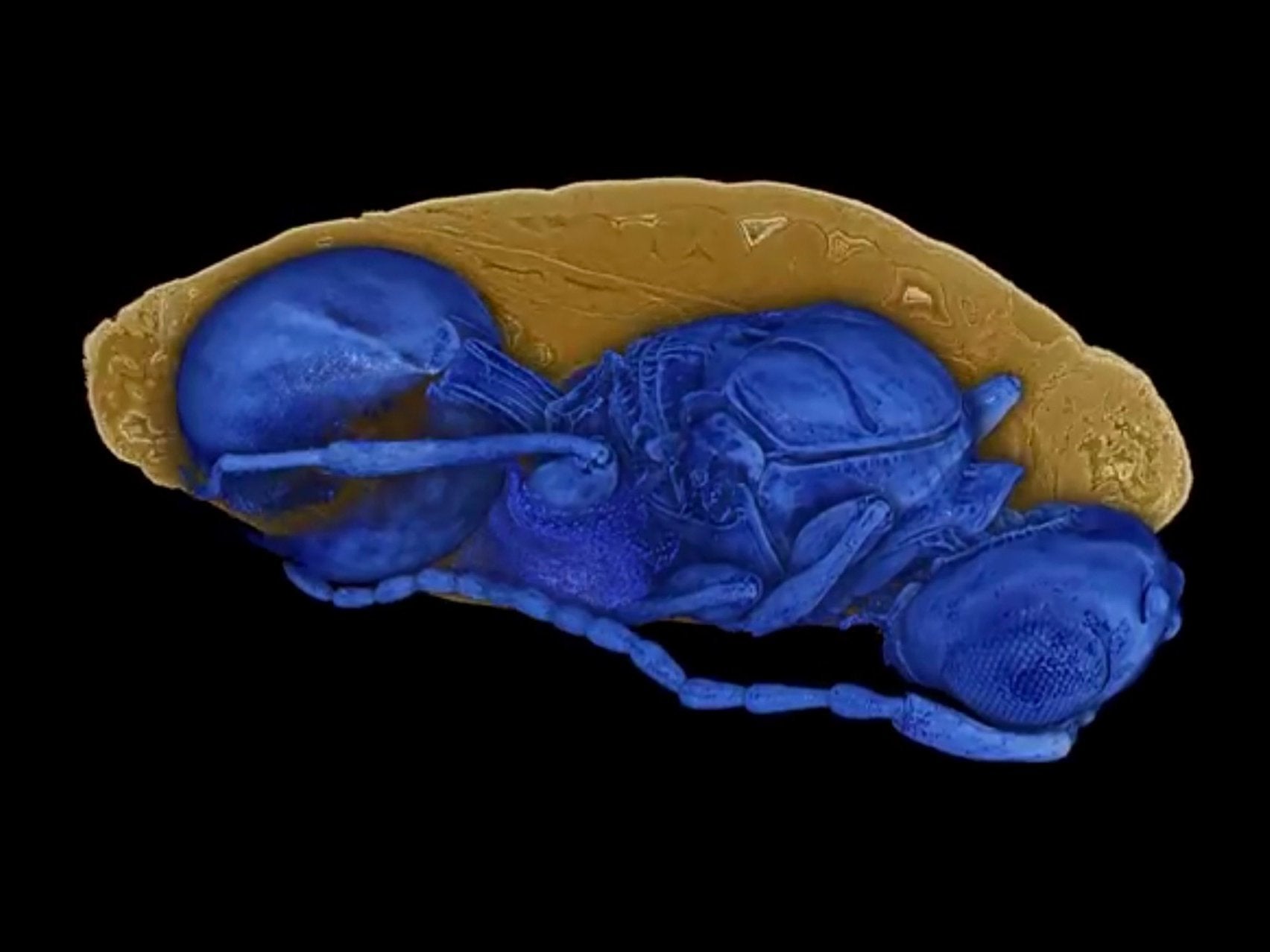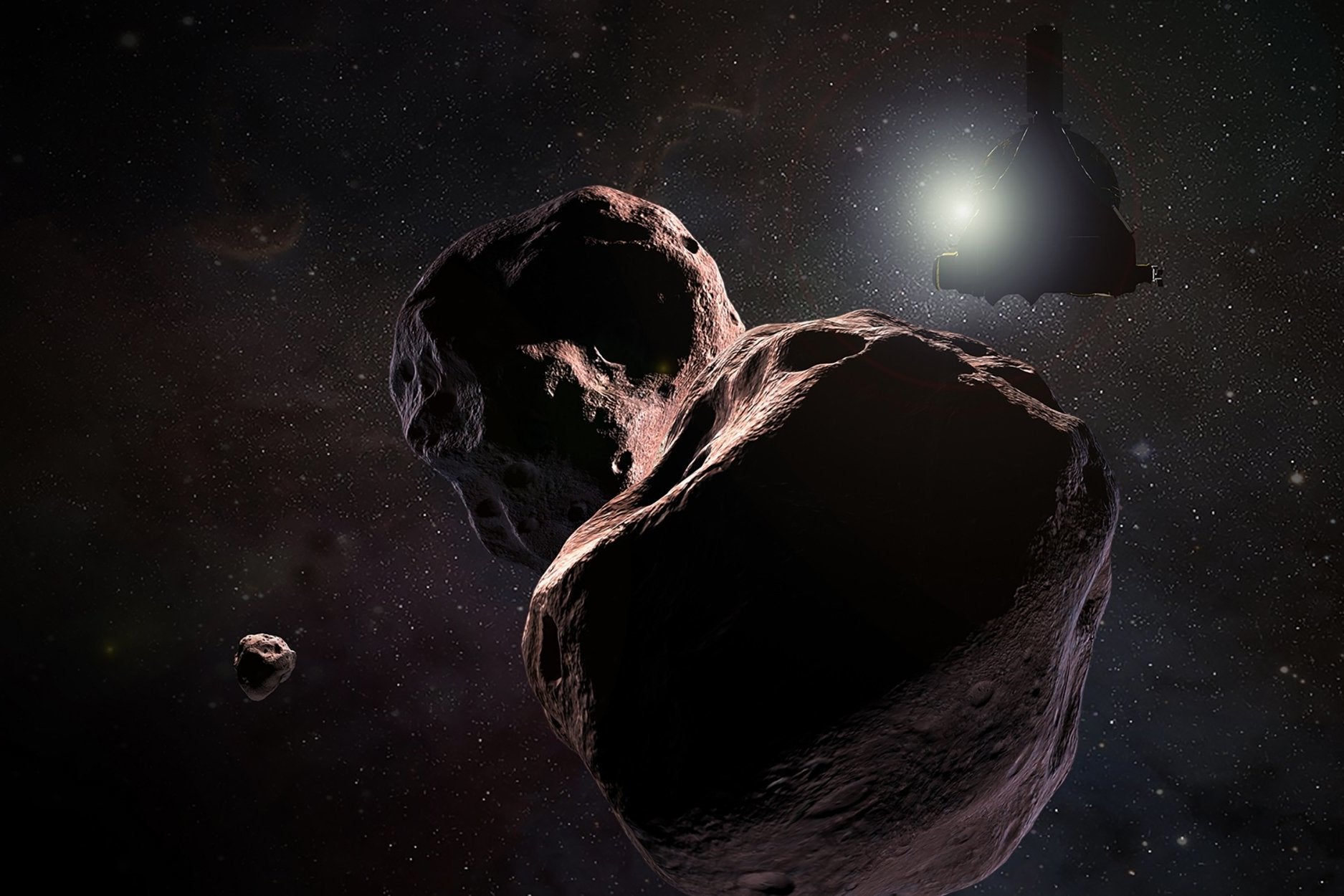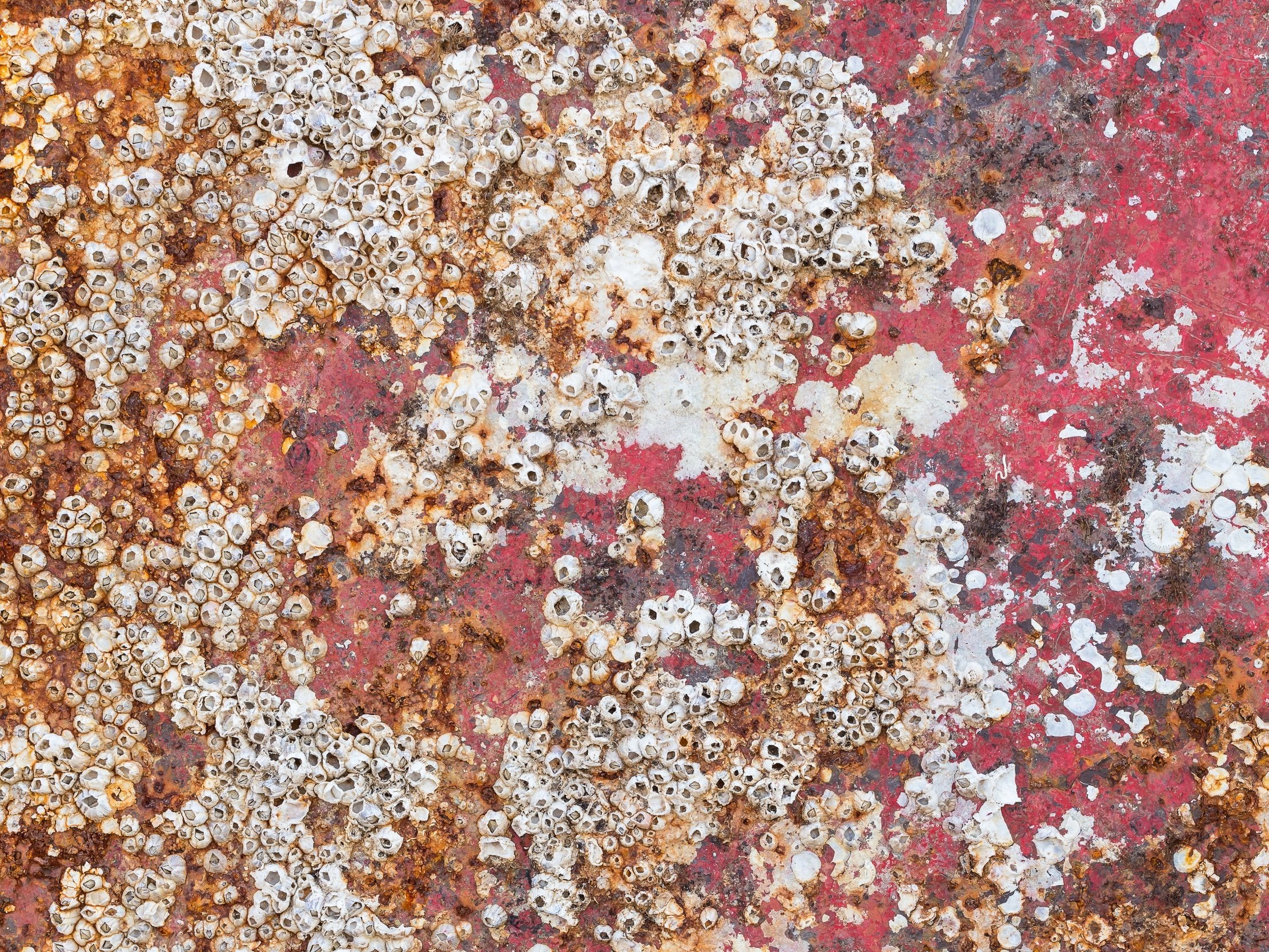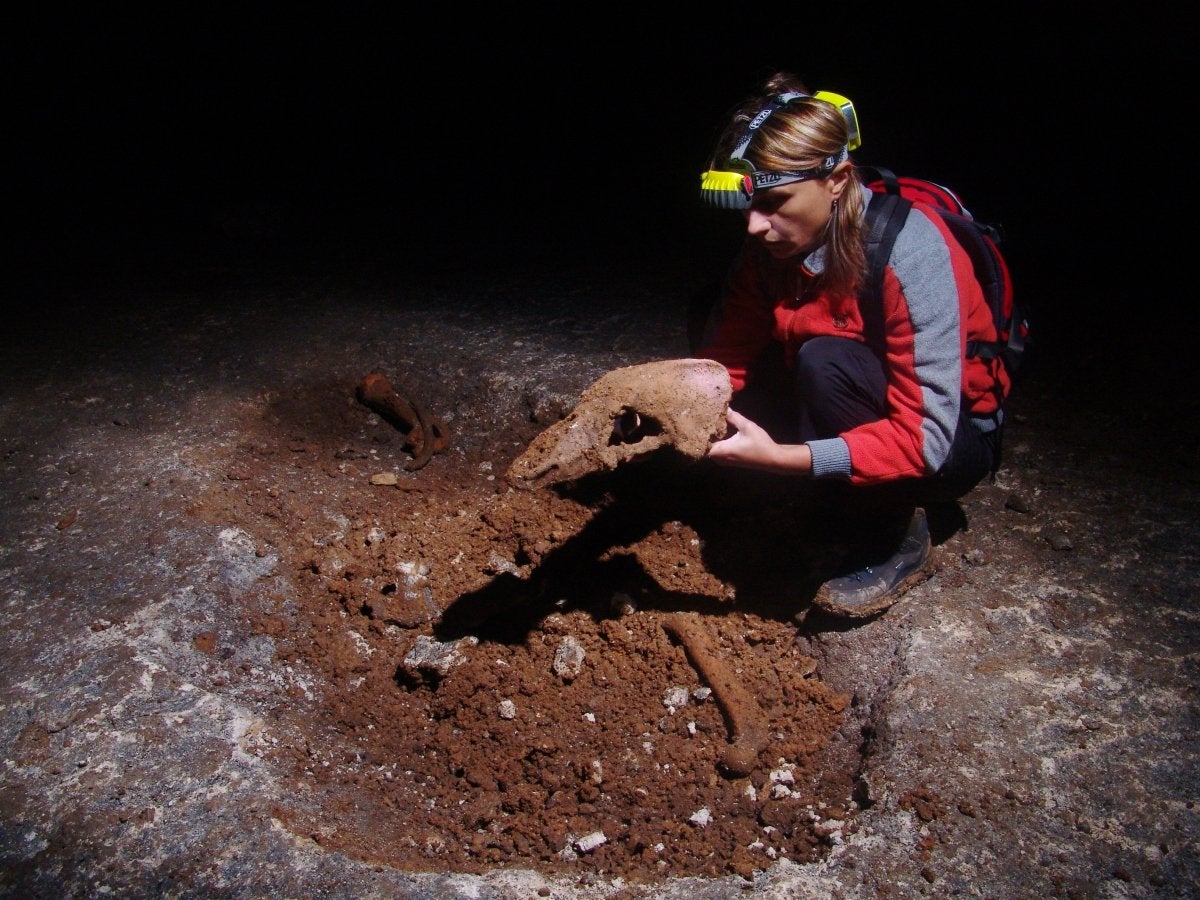Science news in brief: From cannibal insects to getting children to eat greens
And a roundup of other stories from around the world

Guests who like to devour their hosts, forever caught in the act
Wasps are the horror flick killers of the insect world. Sure, their stingers are scary, but it is their parasitising practices that really send a shiver down the exoskeleton.
“They are insects that eat other insects alive,” said Lars Krogmann, an entomologist at the State Museum of Natural History Stuttgart in Germany. “They don’t just kill them; they want to keep them alive for as long as possible.”
Known as parasitoid wasps, these types of wasps are much smaller than the yellow jackets that make people panicky at picnics. With needlelike ovipositors, parasitoid wasps lay their eggs into or on top of other insects. As the young wasps grow, they devour their hosts and eventually kill them, sometimes by bursting through their abdomens like in the movie Alien.
Nearly every insect species has at least one species of parasitoid wasp that specialises at murdering it. The emerald cockroach wasp, for example, injects a mind-controlling cocktail into a cockroach’s brain that turns it into a zombie and host for its eggs.
Now, scientists have found direct, concrete evidence, published recently in Nature Communications, that these insects have honed their grisly tactics over the course of millions of years. Using synchrotron X-ray imaging, researchers from Germany found parasitic wasps lurking inside more than 50 fossils of developing flies that were 30 million to 40 million years old.
“It’s the first time we definitely have proof of a developing parasitoid wasp inside its host in the fossil record,” said Thomas van de Kamp, an entomologist from the Karlsruhe Institute of Technology in Germany and lead author of the study.
Van de Kamp surmised what happened about 30 million years ago when an animal died and its rotting carcass attracted the flies. Inside the decomposing flesh, the flies laid their eggs. The eggs hatched and became larvae that feasted on the remains. The maggots began their pupal phase in hopes of leaving as flies.
Enter the wasps.
The insects most likely laid their own eggs inside the pupae, disrupting the fly’s development. As the wasp larvae ingested the pupae, they grew into adult wasps. Then at some point before the adult wasps had the chance to emerge, they died and the entire thing – host and parasitoid – was fossilised.

How to make them eat their greens? Nature has a way
It is not uncommon for children to despise kale, broccoli or the bitter taste of brussels sprouts. By the time we become adults, many of us have learnt to eat our greens. But it was not just willpower that helped your tastes evolve. New research shows that proteins in our saliva may adapt and bind to bitter compounds, making them more palatable.
The study found that when people were repeatedly exposed to bitter compounds in cocoa, their saliva changed to produce proteins that rendered the flavour of those compounds less bitter.
“Bitter taste tends to be rejected,” said Cordelia A Running, an assistant professor in food and nutrition science at Purdue University in Indiana, and the study’s lead researcher. But, “this is something you might actually be able to change about yourself biologically”.
Over the course of six weeks, the researchers had 64 study participants drink three 8 ounce glasses of almond or cow’s milk with cocoa a day on alternate weeks, each time rating the drink’s flavour. While chocolate milk might not sound like a bitter thing to swallow, it contained only 4 per cent added sugar – a fraction of the added sugar in most chocolatey drinks found at the grocery store.
As the participants’ bitterness ratings decreased, the researchers saw changes in their saliva “reasonably quickly”, Running said. But those changes did not last; a person would need to continue eating bitter foods to maintain their tolerance, she added.
The commonly accepted theory of why humans instinctively dislike bitter foods is evolutionary: bitterness is often a sign of toxicity, and in some cases, extremely high quantities of otherwise healthy bitter foods, like leafy greens, may be harmful. But for similar reasons, bitter foods can also promote health, Running said. These in-vogue plants “seem to stimulate systems in the body that help us respond to threats because they are themselves – in really high doses – threats”, she said.
She and her colleagues think that by binding to the bitter compounds, the salivary proteins may not only make the food taste better, but may also prevent your body from absorbing them fully – whether this is protective or diminishes the foods’ nutritional value, however, is unknown.

100 million miles away, but already taking snapshots
Nasa’s New Horizons spacecraft still has 100 million miles to go, but it has taken its first snapshot of the space rock that will be its date for New Year’s Day 2019.
Mission scientists said they were a bit surprised that the camera on New Horizons was able to make out the tiny object, no more than 20 miles wide, so soon and from so far away.
The image shows a dim dot amid a background of distant stars. Over the coming months, the dot, which has the designation 2014 MU69, will become brighter and larger as New Horizons approaches.
Calculations originally indicated that the spacecraft would not be able to reliably spot the target until at least mid-September.
“We thought it’s worth giving it a shot a month early,” said Harold Weaver, a scientist at the Johns Hopkins Applied Physics Laboratory and the principal investigator of the long-distance camera aboard New Horizons.
At first glance at any one image, all that can be seen are stars.
But in 48 images taken by New Horizons, the scientists were able to subtract the starlight, leaving behind a speck of MU69 right where they expected it to be, at the edge of a much brighter star.
In an email, S Alan Stern, the principal investigator of New Horizons, said: “This is good news because it helps our navigators better plan trajectory corrections.”
On 1 January, 33 minutes after the ball drops in Times Square, the spacecraft is to zip within 2,200 miles of MU69. It will be the first closeup observation of a small Kuiper belt object, one of the clumps of ice and rock beyond the orbit of Neptune.
Three years ago, New Horizons visited the largest Kuiper belt object: Pluto. That revealed a complex and dynamic world with towering mountains of ice, flat-as-a-sheet plains and possibly even a subsurface ocean.
MU69 is of curiosity to planetary scientists because it is expected to be the opposite: small, simple, unchanging. Almost pristine and undisturbed since the birth of the solar system 4.5 billion years ago, it will provide clues of the early building blocks that coalesced into planets.

A new trick to keep barnacles from sticking to ships
Barnacles may have a small footprint, but their effect on global shipping is large.
When ships’ hulls get coated with barnacles and other creatures, they use more fuel and eventually must be hauled out of water and scraped clean, at an estimated cost of several billion dollars a year.
To keep barnacles off hulls, boats are coated in anti-fouling paint that kills barnacle larvae. Unfortunately, the paints’ active ingredients also leach into the water and kill other things, like oysters.
Researchers who study the physics of sticky biological structures at Kiel University in Germany reported recently in the Journal of the Royal Society Interface that one option may involve texture, rather than chemicals. Covering surfaces with microscopic structures shaped like mushrooms, they find, keeps barnacles from getting a firm foothold.
Part of what makes barnacles so difficult to dislodge is that they secrete a liquid glue that makes close contact with the hull’s surface and then hardens into a cement-like substance. If they could develop structures that kept the glue from attaching smoothly, it could compromise the animals’ grip.
Textured coatings that make it difficult for barnacle larvae to settle down already exist. But they only succeed in delaying colonisation of ship hulls, said Lars Heepe, a professor of biomechanics. Heepe, Dennis Petersen, a graduate student, and their colleagues decided to test tape made of silicone and covered with forests of either straight pillars or mushroom shapes.
The team tested their samples in the Baltic Sea. Both accumulated barnacles, but the glue had easily seeped between the straight pillars and made a tight seal with the surface.
On the coating with the mushroom shapes, however, there were big gaps beneath the barnacles’ layer of cement. They were perched precariously on top of the mushroom caps.
To see what this meant in practical terms, the researchers lowered samples back into the Baltic and drew them up again every week for more than four months.
For the first seven weeks, barnacles built up on both, but then something interesting happened.
Steadily, all the barnacles that had landed on the mushroom surface disappeared, apparently pulled from their insecure seats by the motion of the waves. No new barnacles settled on it for the rest of the experiment, while the other coating continued to attract new colonists.

The DNA of extinct cave bears lives on
About 25,000 years ago in Western Europe, the last cave bear drew its final breath and the species went extinct.
But a study published recently in Nature Ecology and Evolution finds that some cave bear DNA lives on in modern brown bears, much like humans carry around a bit of Neanderthal.
The finding challenges our view of extinction, said Ludovic Orlando, a professor at the Centre for GeoGenetics at the Natural History Museum of Denmark, who was not involved in the research.
“Extinction does not imply that genetic material is gone forever,” he said via email.
In the new study, researchers initially set out to learn more about the cave bear by studying its genetics. Almost as a lark they compared the genetic sequence they had derived for the cave bear with an existing sequence of a brown bear, said Axel Barlow, the lead author and a postdoctoral researcher at the University of Potsdam in Germany. The results surprised them.
“There was a really quite obvious signal of hybridisation between these species,” Barlow said.
Wondering whether their results were a fluke, the team then compared the cave bear genome to that of seven other brown bears – one ancient and six modern – and found the same genetic mixing. Cave bears contributed from just under 1 per cent to 2.4 per cent of the genomes of brown bears, the study showed.
“We did not expect to find this at all because they’re really quite diverse in terms of their evolution,” Barlow said.
The team was also able to determine that the genes flowed both ways between species, with the cave bears also carrying some brown bear DNA. The most recent transfer of genes came from the cave bear to the brown, the study found.
The genetic mixing work has implications for how today’s endangered animals should be protected, Barlow said. A better understanding of species that have already gone extinct could also help conservationists provide optimal conditions for preserving today’s endangered species, he said.
© New York Times
Join our commenting forum
Join thought-provoking conversations, follow other Independent readers and see their replies
Comments